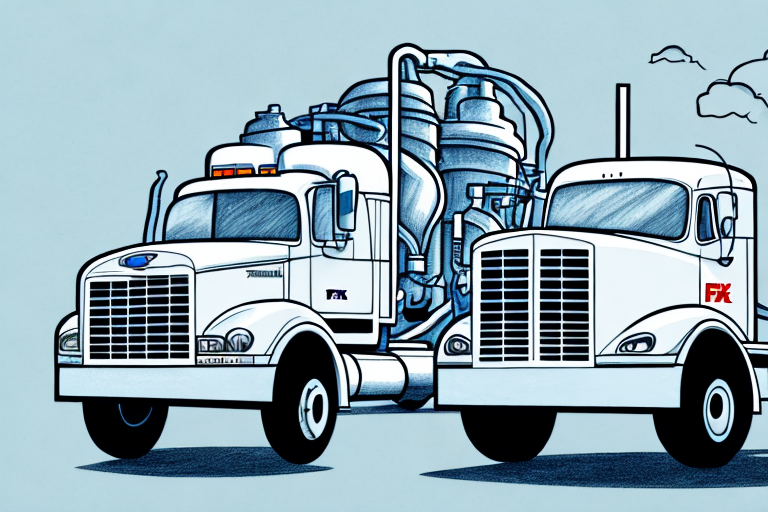Understanding FedEx Fuel Surcharges
As a business owner, comprehending the various fees associated with shipping is crucial for making informed decisions and managing your costs effectively. One significant fee that can impact your shipping expenses is the fuel surcharge applied by FedEx.
How FedEx Calculates Fuel Surcharges
The FedEx fuel surcharge is an additional fee assessed on top of the base shipping rate to reflect the fluctuating cost of fuel. This surcharge is calculated as a percentage of the base shipping rate, and the percentage varies based on the fuel price index published by FedEx.
For example, if the base shipping rate for your package is $10 and the fuel surcharge percentage is 20%, you will be charged an additional $2, making your total shipping cost $12.
The fuel surcharge percentage is updated weekly, based on the national average price of diesel fuel. This dynamic adjustment allows FedEx to respond promptly to changes in fuel prices. Customers can utilize FedEx's fuel surcharge calculator to estimate the surcharge for their shipments based on the current fuel price index.
Factors Influencing FedEx Fuel Surcharges
Fuel Price Index
The primary factor influencing the fuel surcharge is the fuel price index, which reflects the current market price of diesel fuel. This index is updated weekly and directly impacts the surcharge percentage.
Shipping Volume and Weight
The volume and weight of your shipments also play a role. Larger and heavier packages require more fuel for transportation, resulting in higher fuel surcharges.
Distance and Delivery Locations
The distance between the pickup and delivery locations affects the amount of fuel consumed. Longer distances typically lead to higher surcharges due to increased fuel usage.
Seasonal Variations
Fuel prices can fluctuate seasonally, influenced by factors such as demand changes during holidays or shifts in production levels. These variations are reflected in the fuel surcharge adjustments.
History and Trends of FedEx Fuel Surcharges
FedEx introduced the fuel surcharge in 2001 as a response to rising fuel costs. Since its inception, the surcharge has become a standard component of FedEx's shipping rates, adjusting to fuel price fluctuations to maintain profitability.
Over the years, the fuel surcharge percentage has varied, peaking at times when fuel prices spiked. For instance, during periods of global oil price increases, the surcharge has exceeded 30%, significantly impacting shipping costs.
FedEx has also implemented initiatives to mitigate fuel consumption and reduce the environmental impact of its operations. These measures include investing in more fuel-efficient aircraft and vehicles, as well as optimizing delivery routes to conserve fuel.
Comparing FedEx's Fuel Surcharges with Other Carriers
Fuel surcharges are a common practice among major courier companies, including UPS and DHL. While the concept is similar across carriers, the percentage charged can vary significantly.
- UPS: Typically offers a fuel surcharge ranging between 6% and 20%, depending on fuel prices.
- DHL: Applies a fuel surcharge that adjusts with international fuel price indices, often different from domestic carriers.
- USPS: Generally incorporates fuel costs into its standard pricing without a separate surcharge.
When comparing carriers, it's essential to consider not only the fuel surcharge rates but also other factors such as delivery speed, reliability, and additional fees. Utilizing comparison tools and obtaining detailed fee breakdowns can help determine the most cost-effective option for your business.
Strategies to Manage and Reduce Shipping Costs
Utilize Shipping Calculators
Employing shipping calculators can help you estimate costs accurately and choose the most economical shipping method based on your needs.
Negotiate Rates
If your business ships large volumes, negotiating rates with FedEx or other carriers can lead to lower fuel surcharges and overall shipping costs.
Optimize Package Weight and Size
Reducing the weight and size of your packages can decrease the base shipping rate and the associated fuel surcharge.
Consolidate Shipments
Combining multiple orders into a single shipment can reduce the number of deliveries, thereby lowering fuel surcharges and shipping expenses.
Explore Alternative Shipping Methods
Consider using ground shipping for certain packages, as it often incurs lower fuel surcharges compared to air or expedited shipping options.
Environmental Impact and FedEx's Sustainability Efforts
FedEx is actively working to reduce its carbon footprint through various sustainability initiatives. These efforts not only aim to mitigate environmental impact but also help in managing fuel consumption and, consequently, fuel surcharges.
The company has set ambitious goals, including achieving carbon-neutral operations by 2040 and electrifying its entire fleet of vehicles. Investing in fuel-efficient technologies and optimizing delivery routes are key strategies FedEx employs to reduce fuel usage.
Adopting eco-friendly practices can lead to long-term cost savings and contribute to a more sustainable business model, benefiting both the environment and your bottom line.
Impact of FedEx Fuel Surcharges on Your Shipping Costs
The fuel surcharge can notably affect your overall shipping expenses, especially for bulk or heavy shipments. It is essential to incorporate this surcharge into your budgeting process to avoid unexpected costs.
By understanding how fuel surcharges are calculated and the factors that influence them, businesses can better predict and manage their shipping expenditures. Implementing cost-saving strategies, such as those mentioned above, can help mitigate the financial impact of fluctuating fuel prices.
Regularly reviewing and adjusting your shipping policies in response to fuel surcharge changes ensures that your business remains competitive and cost-efficient.






















